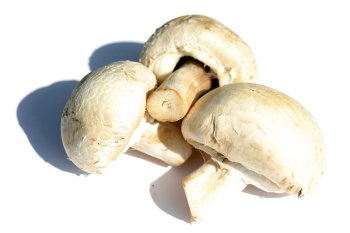Mushroom farm

Foundation of own mushroom farm is quite a possible thing, but it requires responsibility, persistence and knowledge. Technologies of mushroom farming in house conditions differ very much from the industrial ones. That is why the concrete methods of farming can be chosen according to impartial assessment of own abilities.
Mushroom farming for own consumption, not for sale, is possible on average summer residence, in any bunch spaces (shed, cellar, garage edge) or on open space. In the last case «on the stub» method is used — it means cultivation on different wood pieces or logs. This method can be approximately described as the following:
The whole section timber 15-25 cm in diameter and up to 1 meter long should be prepared. The log should be quite wet, the best case — freshly-cut. Sometimes 2-3 days steeping of the log in a pure or in a mixed with poultry excreta water is used.
-
By the use of a drill or a chisel make wholes on surface of a stub. Load the mycelium into these wholes. Compression by the saw dust, sunflower hull, ground straw etc. is available. After that cover the wholes by paraffin.
-
For the mycelium sprouting place the lot into a warm, wet and dark place; trench the basis of a lot in the ground. Sometimes it is covered by a film or placed inside of a premise. The process can take 2-6 month depending on temperature-wet regime.
-
Germinated mushrooms quickly (5-15 days) grow up to normal sizes, after that they can be cut off leaving the mycelium in rest for 7-10 days.
If you plan to open a small farm (with 100-200kg/month fruit bearing), it is more expediently to plant mushrooms inside of a premise, «on the straw». This method includes not just the use of own straw, but also types of compost substrates. The whole chain of actions in this method is the following:
-
Prepare a substrate from saw dust or straw: chap the raw material and steam it in hot water. Cool it down and mix it with mycelium.
-
Pack the seed grain into bags made of polyethylene braided cords. It is strongly recommended NOT to use the cloth sacks (canvas, sacking), because they can mold. After the packing make some cuts on the bags — through these cuts mushrooms will germinate.
-
Keep the bags in a dark place maintaining the temperature of 18 C until the mycelium germination (2-3 weeks). After that transfer the bags into a little colder, but well-lighted and aired place. Mushrooms need 10-12 daylight hours.
-
Mushrooms grow ripe and give first harvest during 7-10 days, then the rest period comes, and then the fruit formation starts again.
At last, if you plan to organize the large volume production (more than 500 kg), then you should use the industrial technologies. Serious capital investment is needed in this case, and also production floor spaces, special equipment and the production line forming. Most likely, you'll be able to produce only one species of mushrooms (e.g. only champignons), because it is impossible to cultivate different species in one place, and it is not cost-effective to form several production lines. In most cases, a farm should have the adjusted supplies and the seller's market. For example, for champignon production you need a compost, you either must purchase it or produce by yourself. First case requires money investment, and the second case requires production floor spaces and also money investment, too.
Sown areas should be placed inside of a building. Existing buildings abandoned by some reasons can be used for this purpose. It can be a stable or a cowhouse purchased from unprofitable collective farm. Anyway you should organize the right temperature, light and air regimes, it means that the purchased buildings must be reconstructed and modernized. These works, including the cost of a building, can be higher than a new building construction. That is why you should estimate the costs in advance, including the cost of climate system equipment. Organization of a strong farm requires a serious business-plan and, perhaps, consultations of biologists.
There is one more variant not described above — just the mycelium cultivation. Truly, in a house conditions this activity can be characterized as rather scientific then industrial.
For example, cost-effective mycelium farming on hydroponics in large volumes requires the true laboratory creation. Apart from this, you can cultivate the mycelium only after in-depth examination of the concrete mushroom biocycle. You should also observe the processing standards. This activity requires remarkable knowledge, skills and experience. That is why you'd better forget about self-maintained mycelium cultivation on the first stages.
5570 view.